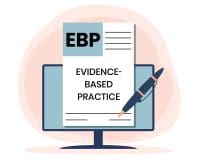You smile as you sign off on the final version of your article slated to be published in a well-respected journal. Your first article is behind you—time to relax and celebrate!
It’s definitely time to celebrate, but don’t relax quite yet. Now you need to develop your plan for promoting your work so that it reaches the widest possible audience.
With so many sources of information clamoring for readers’ attention, you need to consider how to make your article’s “voice” rise above the crowd noise, and then target a variety of outlets that will help you get the word out.
Finding your voice
Identify the most important one or two points of your article. That’s where you’ll want to focus your efforts when you write the short description for dissemination outlets such as social media.
Sometimes the title alone will do the trick. For example, “An upstanding approach to address bullying in nursing,” published in the September issue of American Nurse Journal, gives potential readers what they need to know and works well as a Tweet. Bullying is of high interest to most nurses, and the article promises a strategy on how to deal with it.
You’ll need to do a bit more work with research articles that have titles such as “Patient Activation Among Community-Dwelling Persons Living With Chronic Obstructive Pulmonary Disease.” While the title is appropriate for a journal, if you wanted to share on Twitter, you might use a headline such as “What predicts self-management in patients with COPD?” with a link to the abstract.
Once you have the key point(s) in mind, consider these options for sharing your work.
Post on social media
Post information about your article on each of your social media accounts. Keep the entries short and provide a link to your article on the journal’s website. Even if the full text of the article isn’t immediately available (as is the case, for example, for those without a subscription to the journal), it’s still important to share because many of your contacts will be able to access the article through databases at work or school.
Probably the two best options for professional sharing on social media are LinkedIn and Twitter.
Be sure your LinkedIn profile includes a professional photo of yourself, which makes it more likely others will read it.
In the case of Twitter, add hashtags (for example, #bullying)—key words that that reflect the content of your article—to encourage sharing. Tag the journal that published your article, so those who manage the journal’s social media accounts can find and like or share your posts more easily. In addition, be sure you’re connected with the journal’s social media accounts, so if your article is featured, you’ll see it and be able to share easily.
For any social media option, consider including an image (photo or figure from your article) when you post. (Remember to respect copyright for photos you find online.) For example, you may post part of the algorithm you developed for working with difficult families as part of your Tweet to entice users to access the article for the full algorithm.
Join a network
Consider joining an academic online community such as Academia.edu, Google Scholar Citations, Kudos, Mendeley, or ResearchGate. Once you create a profile, you’ll be able to network with others and share your publications (as long as your copyright agreement with the publisher allows you to do so).
Also consider registering in Open Research and Contributor ID (ORCID) to obtain a unique identification number that keeps your work associated with your name. Landers and Schulte (2017) note that this is especially important if you change your name during your career. ORCID also facilitates sharing your work with other researchers.
Share with other connections
Share information about your publication with your employer, the nursing school you graduated from, and professional associations; many of these contacts will publish the information in their newsletters or online.
Be creative
Consider posting a short video on YouTube and your social media accounts of you talking about your article. You can easily create the video using your smart phone or tablet. Shorter is better; keep the video to no more than 3 minutes. Other creative options include Podcasts and Twitter chats.
And, of course, if you have a blog, share a brief entry about your article.
Track results
Keep track of how widely your article is being disseminated. One easy way to do so is to create a Google Alert for your name or key aspect of the article. You’ll then receive an automatic email when there’s a match with the search term you entered. You can set the notification timing—as it occurs, daily, or weekly, depending on your preference. Google Alerts have the additional benefit of keeping you current on what’s being published in your interest area.
Another option to consider is altmetrics, which track mentions of your work in a variety of sources, including social media, journal citations, online reference managers, and mainstream media. Examples of companies that track altmetrics are Altmetric and Plum Analytics. Many publishers now use an altmetrics service so results are available on the web page where the article is posted. You can check the results to see how the article is doing.
Promotion success
Many nurses are reluctant to promote themselves, but in this case, you shouldn’t be shy. You want as many people as possible to read your article, so don’t hold back!
Reference
Landers T, Schulte SJ. Promoting your work. In: Saver C. Anatomy of Writing for Publication for Nurses, 3rd ed. Indianapolis: Sigma; 2017.



















